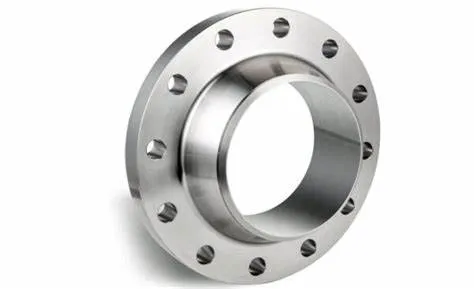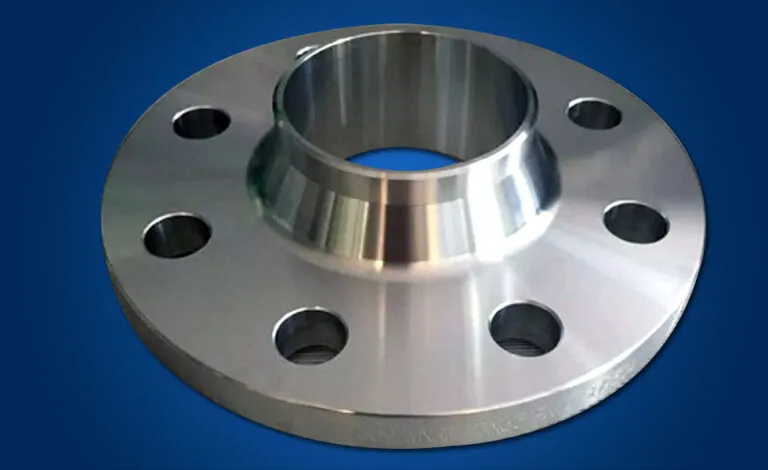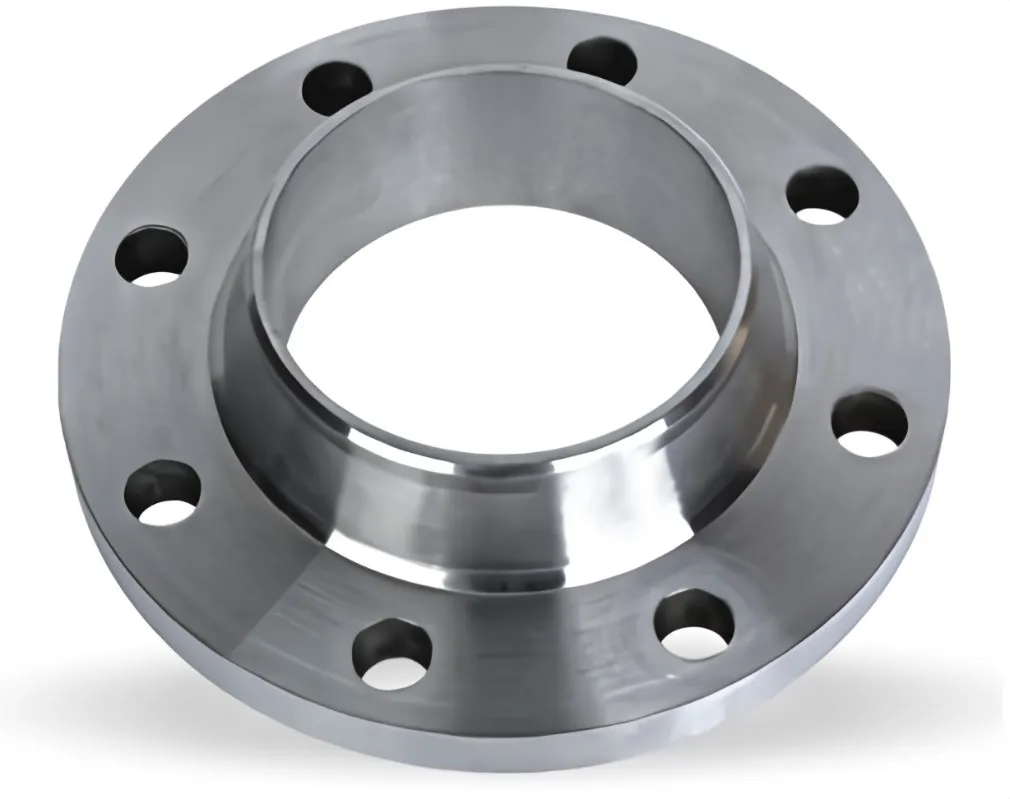ASME B16.47 is a standard for large diameter steel flanges issued by the American Society of Mechanical Engineers (ASME). It is applicable to pipeline systems with nominal diameters ranging from NPS 26 (about 660mm) to NPS 60 (about 1524mm), and is divided into A series (imperial) and B series (metric). ASME B16.47 Welding Neck Flange refers to large diameter butt welding neck flanges that meet this standard.
Structural features
Neck structure: The butt welding neck flange has a long tapered neck, which is its significant feature. The neck is butt welded to the pipe, and the thickness of the neck gradually transitions to the flange. This design can effectively transfer the stress of the pipeline to the flange evenly, reduce stress concentration, and enhance the strength and reliability of the connection.
Flange surface: There are many types of sealing surfaces on the flange surface, the most common of which are raised face (RF), ring joint surface (RTJ), etc. The raised face sealing surface is an annular area that is higher than the plane of the flange body and is used with a gasket to achieve sealing; the ring connection surface is specifically used to install metal ring gaskets, which are suitable for harsh working conditions such as high pressure and high temperature.
Bolt holes: There are several bolt holes evenly distributed on the circumference. The number, diameter and spacing of the bolt holes are strictly in accordance with the ASME B16.47 standard to ensure correct connection with the matching flange and provide sufficient clamping force to ensure sealing.
Material selection
Carbon steel: For example, ASTM A105, which is a commonly used carbon steel material with good strength and toughness, is relatively low in cost and is suitable for general industrial piping systems. It can withstand certain pressures and temperatures and is widely used in the transportation of media such as water, steam, and air.
Alloy steel: Low-temperature alloy steels such as ASTM A350 LF2 have alloy elements added to them, so that they can still maintain good mechanical properties in low-temperature environments. They are often used in low-temperature piping systems, such as the storage and transportation of liquefied natural gas (LNG).
Stainless steel: such as ASTM A182 F304, F316, etc., have excellent corrosion resistance and are suitable for chemical, food, pharmaceutical and other industries. They can prevent the medium from corroding the flange and ensure the long-term stable operation of the pipeline system.
Manufacturing process
Forging: Butt-weld neck flanges are usually manufactured by forging process. Forging can improve the organizational structure of the material and improve the strength and toughness of the flange. Through forging, the metal grains can be made finer, internal defects can be reduced, and the quality of the flange can be improved.
Machining: The flange blank after forging needs to be machined, including turning, drilling, milling and other processes to achieve the dimensional accuracy and surface quality required by the standard. In particular, the processing of the neck needs to ensure that its shape and size meet the design requirements to ensure the welding quality with the pipeline.
Inspection items
Application scenarios
Oil and gas industry
In the pipeline system of offshore oil platforms, due to the complex working conditions, the high strength and reliability of the butt-weld neck flange make it an ideal choice for connecting pipelines and equipment, and can withstand high pressure, high temperature and severe vibration.
At the trunk and branch nodes of long-distance natural gas pipelines, the use of butt-weld neck flanges can ensure the sealing and safety of the pipelines and prevent natural gas leakage.
Chemical Industry
In the pipeline system of large chemical plants, butt-weld neck flanges are suitable for pipeline connections for conveying various corrosive media and high-pressure fluids. For example, they are widely used in the distillation unit of refineries, the import and export pipelines of chemical reactors, and other parts.
Power Industry
In high-temperature and high-pressure pipeline systems such as steam pipelines and water supply pipelines in power plants, butt-weld neck flanges can withstand high temperatures and high pressures to ensure the stable operation of the pipeline system. For example, butt-weld neck flanges are often used in the connection of steam pipelines between boilers and steam turbines.

















